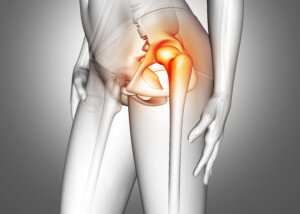
Multiple sclerosis is known for causing pain, but can it cause excruciating or severe pain – in one’s back?
If back pain isn’t the No. 1 non-fatal health problem in the U.S., then it certainly comes in as the No. 2.
Back pain can range from mild to agonizing and everything in between.
And there are just so many causes of pain in the back.
Common Causes of Back Pain
The most common cause is a combination of poor biomechanics (e.g., using one’s lower back instead of their legs to lift a heavy item from the floor) and poorly trained low back apparatus due to lack of weight-bearing exercise.
Vehicular accidents are also a leading cause.
One might also say that vertebral degeneration is an unavoidable natural part of aging that begins around 40, though very physically fit middle-agers with strong backs would beg to differ.
Back pain can even be caused by not just cancerous tumors on the spine, but metastatic cancer from primary tumor sites such as the ovary and prostate.
Multiple sclerosis, too, can cause back pain.
MS As a Cause of Back Pain

Freepik/stefamerpik
So where does multiple sclerosis fit into the arena of back pain, particularly of an excruciating or very severe nature?
“MS can cause back pain which is often related to spasticity,” says Mitzi J. Williams, MD, clinical neurologist with Morehouse School of Medicine, an MS specialist and clinical advisor for the Multiple Sclerosis Foundation.
Spasticity is the ongoing contraction of muscle, which leads to tightness and stiffness.
“It usually does not cause excruciating back pain to the point where someone has difficulty moving,” says Dr. Williams.
“People with MS can also have back pain from other common causes such as muscle strain from an injury or degenerative disease such as a slipped disc in the spine.”
Excruciating Back Pain with MS
Dr. Williams explains that “MS symptoms can pile on top of each other, so if someone has back pain from spasticity with MS and they overdo it or strain a muscle, or have degenerative disease as well, the combination of the symptoms can result in excruciating pain.
“But the pain may not be due only to the MS component — and that with multiple sclerosis it is hard to separate out the components of pain from spasticity, degeneration, etc.
“People often have to see a neurologist and orthopedic doctor to help sort out these issues and treat the pain appropriately.”
MRI Scans
An MRI (magnetic resonance imaging) is a crucial diagnostic tool for identifying the source of back pain.
This imaging technique offers detailed pictures of the spine and surrounding tissues, which helps in pinpointing various potential issues.
Since MRI is a non-invasive procedure and does not involve radiation, it’s a safe option for obtaining detailed images of the spine.

Dr. Williams is author of “MS Made Simple: The Essential Guide to Understanding Your Multiple Sclerosis Diagnosis.” She is a member of the American Academy of Neurology.
 Lorra Garrick has been covering medical, fitness and cybersecurity topics for many years, having written thousands of articles for print magazines and websites, including as a ghostwriter. She’s also a former ACE-certified personal trainer.
Lorra Garrick has been covering medical, fitness and cybersecurity topics for many years, having written thousands of articles for print magazines and websites, including as a ghostwriter. She’s also a former ACE-certified personal trainer.
.









































